Unbearable temperatures exceeding 40° and 50° are increasingly observed in many parts of the world, paralyzing society and creating a serious threat to the health and well-being of people. One of the main consequences of global warming is extreme weather events, which include, in particular, periods of abnormally high temperatures in winter, heat waves in summer. They can cause severe heat stress for the human body, against which background already existing diseases are most often exacerbated.
One of the main consequences of global warming is extreme weather events, which include periods of abnormally high temperatures in winter and heat waves in summer. They can cause severe heat stress for the human body, which often worsens existing illnesses. Namely, in conditions of high air temperatures that do not drop even at night, the body is forced to cope with increased stress, which can be fatal in the presence of lung diseases, cardiovascular diseases, and other illnesses. In recent years, regional health services and UN special representatives have been publishing statistics on tragic outcomes and preliminary forecasts for decades. But a more general analysis of mortality around the world associated with abnormal heat waves has not yet been sufficiently assessed.
An international team of doctors collected data on daily deaths and temperatures in 750 settlements in 43 countries for the period from 1990 to 2019. There is no standard definition of abnormal heat worldwide, either in scientific research or in politics (it is defined based on the intensity and duration of temperature). A specific team, citing experts, defined this phenomenon for each settlement as an excess of the average daily temperature over the year-round temperature with ≥95% for a duration of ≥2 days. All analyses were limited to the warm season – the hottest 4 months in a row.
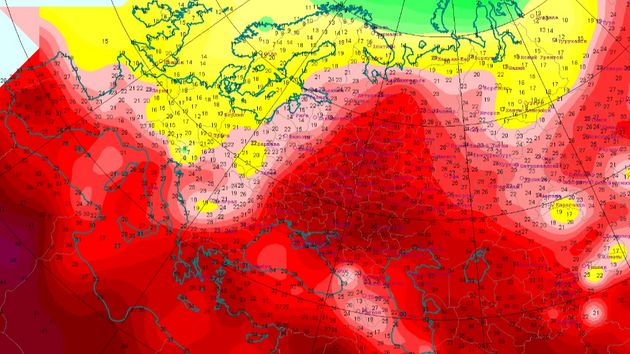
It turned out that excess mortality amounted to 153,078 deaths per year, which is 1% of all outcomes worldwide; on average, 236 deaths per 10 million inhabitants. Most often, heat waves caused deaths in Europe – 655 deaths per 10 million (the leaders are Italy, Greece, Malta). Mortality associated with such weather showed complex regional differences: 48.95% of sad deaths occur in Asia, 31.56% in Europe, 13.82% in Africa, 5.37% in America and 0.28% in Oceania. Clusters of excess deaths were observed in East and South Asia, East and South Europe and areas near the Gulf of Guinea in Africa.
The findings of this study suggest that no region of the world is immune to the impact of heat waves on mortality in the context of climate change, even though some areas are better acclimatized to heat than others. The socioeconomic costs of heat waves are also likely to increase in the future. However, the latest WHO study shows that only half of 101 countries have developed national climate change and health plans, with only four countries having sufficient national funds to implement the plans.
Heat stress is the accumulation of heat in the body, either generated internally by the body’s muscles or by the external environment. It occurs when the amount of heat absorbed by the body from the environment exceeds the body’s ability to dissipate it. Heat stress is usually caused by a combination of factors such as high environmental temperatures, humidity, physical activity, and inadequate fluid intake. The human body’s ability to maintain body temperature within certain limits is influenced by a variety of factors. Human heat balance is determined by the balance between the heat produced by the human body and the heat it exchanges with the environment. This balance is controlled by the body’s thermoregulatory system (the hypothalamus, sweat glands, circulatory system, and skin), physiology (how the body functions), and behavior, which includes things like eating and drinking, activity and rest, clothing, and so on.
Symptoms of heat stress include elevated body temperature, increased heart rate, rapid breathing, increased sweating, nausea, dizziness, and in severe cases, heat-related illnesses such as heat stroke, which can lead to life-threatening conditions and require emergency medical attention.
Several key risk factors influence people’s susceptibility to heat stress. Environmental conditions such as high temperatures and humidity play a key role in increasing the risk because they reduce the evaporation of sweat, which is the body’s primary cooling mechanism. The evaporation of sweat from the skin cools our bodies, but higher humidity levels limit evaporative cooling. As a result, we can suffer from heat stress and illness, and the consequences can even be fatal. In addition, intense physical activity increases the body’s heat production, making people more vulnerable. Personal factors including age, health conditions, and medications can also make people more susceptible to heat stress.
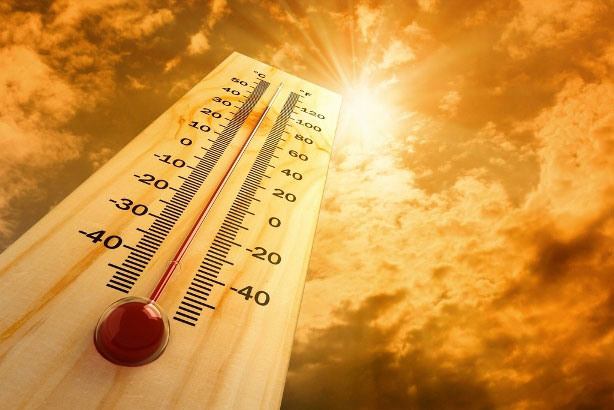
Heat stress can be measured using a variety of physiological and environmental indicators to assess the effects of heat on the human body.
A widely used index for assessing heat stress is the Universal Heat Climate Index (UTCI). This is a human heat stress index that takes into account various environmental factors to assess the temperature a person feels and the body’s physiological response to different levels of heat stress. The UTCI takes into account the following environmental parameters: air temperature, solar radiation, wind speed, and air humidity.
By combining these factors, UTCI provides an accurate representation of how the human body perceives and responds to the thermal environment. This is particularly useful in assessing heat stress in a variety of contexts, such as occupational settings, outdoor activities, and urban planning, where a more detailed understanding of heat stress is important.
UTCI classifies heat stress into different levels based on how the temperature is felt and the physiological responses that result. This classification helps individuals, professionals, and policymakers better understand the potential health impacts associated with different levels of heat stress. At temperatures below +26°C, heat stress is considered absent. Moderate heat stress occurs at temperatures between +26°C and +32°C, severe heat stress occurs at temperatures between +32°C and +38°C, very severe heat stress occurs when thermometers show +38°C and +46°C, and extreme heat stress occurs at temperatures above +46°C.
To avoid heat stress in hot weather, monitor your health, drink more fluids, wear light-colored clothing and hats, and try to spend less time in bright sunlight.
Heat waves already observed in 2024 in Asia, Africa, Europe, the Middle East and North America have had severe consequences, claiming hundreds of lives, reducing productivity and crop yields, disrupting education and energy supplies, and increasing the risk of wildfires.
Heat waves are becoming more common and intense, starting earlier and ending later, and occurring simultaneously in several regions due to human-induced climate change. Unbearable temperatures exceeding 40° and 50° are increasingly common in many parts of the world, paralyzing societies and posing serious threats to human health and well-being.
Since late May, the southwestern United States, Mexico, and northern Central American countries have been experiencing unbearable heat. On June 20, the temperature at the Tepache weather station in northwestern Mexico reached +52°. The US National Weather Service has repeatedly warned of “dangerous and sweltering heat” in many regions.
Exceptionally high temperatures are being observed in the Middle East, a region that is traditionally hot. Jahra in Kuwait has seen eight consecutive days of maximum daytime temperatures above 50°C, with minimum (nighttime) temperatures sometimes exceeding 35°C. This corresponds to average temperatures of 6–8°C above normal. In Saudi Arabia, temperatures have risen above 50°C. Millions of people have faced dangerous conditions during the annual Hajj, or pilgrimage to Mecca, with 1,300 people reported to have died and many more sickened by the heat.
Even in May, temperatures in many parts of the Middle East and much of Asia were well above 40°C. The heat was particularly hard on people living in refugee camps and informal housing, as well as those working outdoors. Schools were closed in many cities in Asia.
Much of India suffered from a prolonged heat wave during the pre-monsoon period from March to early June. New Delhi recorded its highest temperatures on record in May, bringing the city to a standstill. Persistently high day and night temperatures continue to affect millions of residents, leading to water and energy shortages.
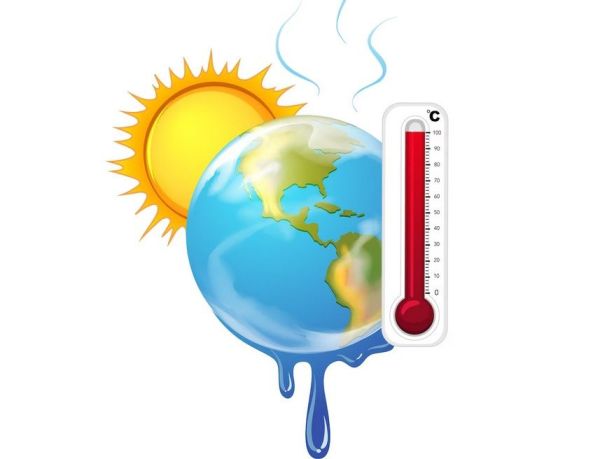
Mediterranean and North African countries have been hit by high temperatures, leading to forest fires in Turkey and Greece.
Sea surface temperatures are exceptionally high and above average in many areas.
A new seasonal outlook prepared for the WMO says temperatures will be well above average for the warmest season in July to September across much of the Northern Hemisphere. This includes most of Africa, Europe and Asia, much of North America, Central America and the Caribbean, and tropical South America. This means increased risks of heat waves and wildfires everywhere.
Cities and countries should develop heat-related preparedness and response strategies. Local authorities should direct resources and take action to protect the most vulnerable in their communities. Individual awareness and preparedness are equally important. Everyone should be aware of the signs and symptoms of heat illness and have a personal action plan to stay safe and protect those in their care, especially the most vulnerable. Residents should follow official warnings and advice from their national and environmental health authorities.
From May 15, 2023 to May 15, 2024, scientists from Climate Central, the Red Cross Red Crescent Climate Centre and World Weather Attribution analysed the impact of human-caused climate change on deadly heatwaves, and the results were enough to make anyone – human or frog – jump ship.
According to the report, during the past 2023, the Earth experienced 11 consecutive months of record temperatures, including 76 extreme heat waves in 90 countries. About 78 percent of the world’s population (or 6.8 billion people) experienced 31 days of extreme heat, a metric defined as temperatures that are warmer than 90 percent of local temperatures observed on that particular day from 1991 to 2020.
“This report provides irrefutable scientific evidence that extreme heat is a deadly manifestation of the climate crisis,” Aditya V. Bahadur, director of the Red Cross Red Crescent Climate Centre, said in a press release. “It damages human health, critical infrastructure, economies, agriculture and the environment, thereby undermining human development gains and reducing well-being, particularly for poor and marginalised communities in the global South.”
To arrive at these numbers, the research team used a peer-reviewed methodology known as the Climate Shift Index (CSI), and when any day reached “level 2,” indicating that climate change had doubled the likelihood of a temperature event, they considered it an excess heat day.
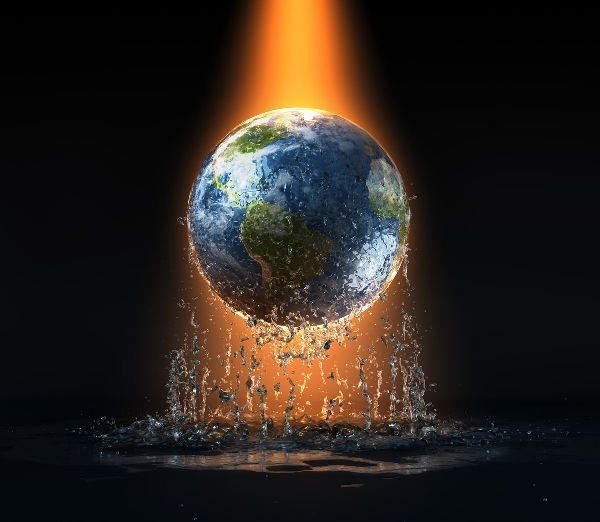
Heatwaves are currently raging in countries from Pakistan to Finland, and they are causing a host of problems. Most alarmingly, the researchers note, is that unlike extreme weather events like tornadoes and hurricanes, excess heat “kills more slowly and less obviously.” Heatwaves are also known to worsen existing health conditions and even cause an increase in premature births, among many other harmful effects.
“While floods and cyclones often make headlines, heat waves are perhaps the deadliest extreme event,” the report says, “with thousands of heat-related deaths recorded each year and many more cases going unreported.”
In Russia, 40 heat records were set in one day in early July. Against the backdrop of the abnormal heat that engulfed the Russian Plain and the southern Far East, the past 24 hours were marked by another series of 40 temperature records, 9 of which were recorded in regional centers: Zaporozhye +35.5° (previous 35.0° in 1991); Simferopol +35.3° (previous +34.5° in 1938); Tver +33.7° (previous +32.9° in 1999); Bryansk +32.3° (previous +30.7° in 1991); Vladimir +32.3° (previous +30.0° in 1964); Moscow +32.0° (previous +31.9° in 1890); Tula +31.8° (previous +30.6° in 1991); Vologda +30.6° (previous +30.2° in 1999); Vladivostok +27.4° (previous +27.3° in 1994).
The air temperature in the capital of India set a new record, reaching +49.9°C in May, RIA Novosti reports, citing the Indian Meteorological Department.
According to the India Meteorological Department, some areas like Mungeshpur and Narela recorded a temperature of +49.9°C, which is 9° above normal. Najafgarh also recorded a temperature of +49.8°C. Meanwhile, the main observatory for measuring air quality and temperature, located in the capital’s Safdarjung area, recorded an average temperature of +48.5°C, which is 5° above normal.
Previously, the highest temperature ever recorded in Delhi was +49.2°C and was observed on May 15-16, 2022.
The hottest place in India was the city of Churu, located in the northwest of the state of Rajasthan, where the temperature reached +50.5°C, which is only 0.5° less than the national record of +51°C, set in May 2016 in the city of Phalodi, also located in the state of Rajasthan.
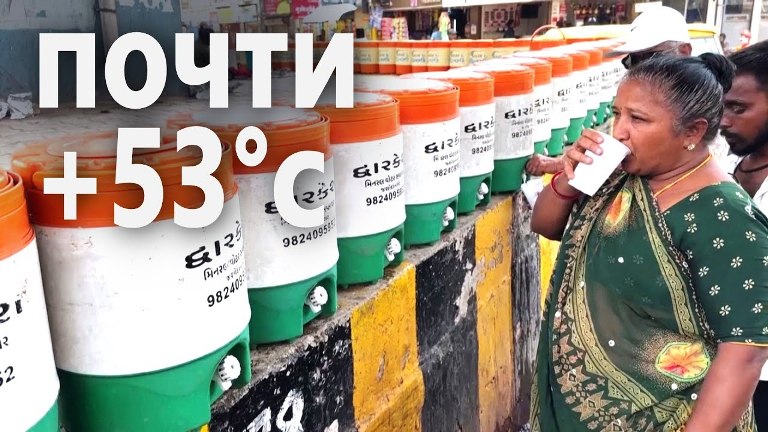
Temperatures in northwest and central parts of the country are likely to drop in three days due to moisture intrusion from the Arabian Sea, while northwest India may experience thunderstorms and rain in the western Himalayan region, the India Meteorological Department said.
Authorities are advising people to avoid exposure to the scorching sun, stay hydrated and wear light-coloured clothing. India has reported 16,000 cases of heat stroke and 60 fever-related deaths since March 1.
Last summer, Kuwait was so hot that birds fell dead from the sky. Associated Press journalists say seahorses in the Gulf were literally boiled. Dead mollusks covered the rocks, their shells opening as if they had been steamed.
Kuwait reached a scorching 53.2°C last year, making it one of the hottest places on Earth. The record heat, which Kuwait experiences every season, has become so intense that people are increasingly finding it unbearable. According to scientists, by the end of the century, being outdoors in Kuwait could be life-threatening – not only for birds, but for humans as well. It has been proven that 67% of deaths in the capital of Kuwait are related to heat, climate change.

Still, Kuwait remains one of the world’s largest oil producers and exporters, and emits significant amounts of pollutants per capita. The country continues to burn oil to generate electricity and is among the world’s largest per capita emitters of carbon, according to the World Resources Institute. Renewable energy accounts for less than 1% of the country’s energy, well below Kuwait’s 2030 target of 15%.
The country’s programs for transitioning to renewable energy sources have not been developed, despite significant funding. This situation contributes to the emergence of a critical environmental situation in the country. According to environmentalists, layers of garbage are increasingly covering the streets of the capital. Sewage rushes into the smoking bay. Fish carcasses washed up on the shore emit a lingering stench, which environmental activists call a sharp manifestation of the country’s environmental and climate policy.
The ongoing period of abnormally hot weather in many regions of Russia is contributing to an increase in the number of forest fires. As RIA Novosti reports, last week a federal state of emergency was declared in Yakutia due to forest fires – this decision was made at an extraordinary meeting of the government commission for the prevention and elimination of emergencies and ensuring fire safety. According to forest protection aircraft, as of yesterday, 107 wildfires were active in Yakutia. In total, the fire has already spread over 331 thousand hectares. More than 1,500 people and 100 units of equipment have been deployed to fight the elements. The Ministry of Emergency Situations’ aviation is being used to monitor the situation and extinguish the fires.
According to current data, the largest area of fires was recorded in the Trans-Baikal Territory – there were 85 fires on 199,590 hectares.
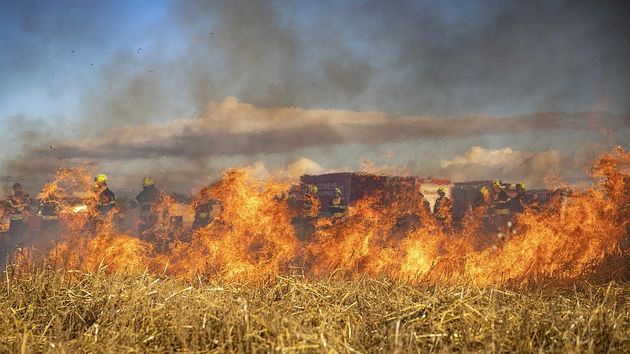
According to information from regional forestry dispatch services, over the past 24 hours, forest fire services and involved persons in 19 regions of Russia extinguished 57 forest fires over an area of 652 hectares of fire.
According to our forecasts, the weather situation in Russia will continue to negatively affect the situation with wildfires: in the next 5 days, dry and abnormally hot weather will persist in the southern part of Eastern Siberia and the Far East, with temperatures 5–7° above the climatic norm.
Roads and sidewalks in some areas are so hot that skin contact can cause second-degree burns. Researchers at NASA’s Jet Propulsion Laboratory in Southern California have mapped the hot pavement in Phoenix, where skin contact — such as from a fall — can cause severe burns. The image shows ground temperatures across a grid of roads and adjacent sidewalks, showing how urban spaces can become dangerous in hot weather.
The data for this visualization of the Phoenix area — the fifth-most populous city in the U.S. — was collected at 1:02 p.m. local time on June 19, 2024, by a NASA instrument aboard the International Space Station. The instrument, called ECOSTRESS (short for Ecosystem Spaceborne Thermal Radiometer Experiment on Space Station), measures thermal infrared radiation from the Earth’s surface.
The image shows how miles of asphalt and concrete surfaces (colored here yellow, red, and purple depending on temperature) retain heat. Surfaces were measured to be at least 120 degrees Fahrenheit (49 degrees Celsius) to the touch — hot enough to cause burns from contact in minutes or seconds.

The image also shows the cooling effect of green space in communities like Encanto and Camelback East, in contrast to the warmer surface temperatures seen in Maryvale and Central City, which have fewer parks and trees.
“We’re creating these maps to be intuitive for users and to help make the data more accessible to the public and citizen scientists,” said Glynn Halley, a climate researcher at JPL. “We see them as an important tool for planning effective heat-mitigation measures, such as planting trees that can cool the hottest roads and sidewalks.”
Launched to the International Space Station in 2018, ECOSTRESS has as its primary mission to determine water consumption thresholds and water stress in plants, providing insight into their ability to adapt to a warming climate. But the instrument is also useful for documenting other heat-related phenomena, such as patterns of heat absorption and retention.
To create the Phoenix image, the scientists used a machine learning algorithm that incorporated data from additional satellites: NASA/USGS Landsat and Sentinel-2. The combined measurements were used to “refine” surface temperatures to a resolution of 100 feet (30 meters) by 100 feet (30 meters).




